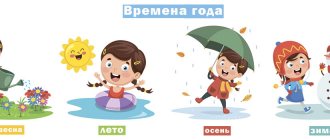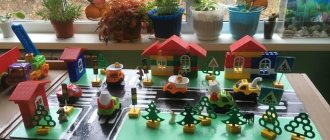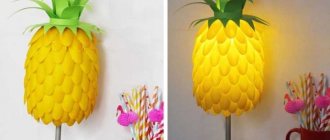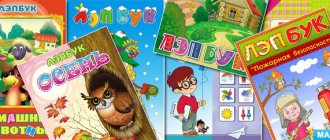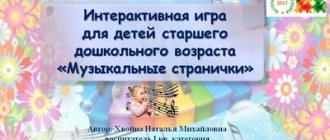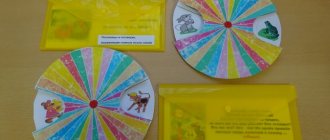A manual for conducting music classes in the younger group of kindergarten
A guide for conducting music classes in kindergarten for children 2-3 years old.
Author: Svetlana Nikolaevna Kryuchkova, music director of MDOU Kindergarten No. 127 “Northern Fairy Tale”, Petrozavodsk Description of the material: the material may be of interest to music directors and educators Purpose: to create a game situation in a music lesson Objectives: - to develop singing skills in children - to deliver joy when perceiving familiar music - to develop children's speech abilities - to develop memory, thinking, imagination. Kids love to listen to songs; they sing with great pleasure those already familiar to them. Visualization in music classes in kindergarten plays a huge role in working with preschoolers. I try to use as many different pictures, toys, and aids as possible. I would like to present to your attention one of the manuals made by me, which my students like - “MUSIC BOOK”. The manual includes a variety of children's songs from the repertoire of the first junior group. Such as “Cockerel”, “Sun”, “Doll”, “Dog”, “Bird”, “Steam Locomotive” and others. On each page of the book I printed a picture corresponding to the title of the song. On each page I wrote excerpts from songs - notes and words. The pages were fastened together with a booklet maker. The result is a book.
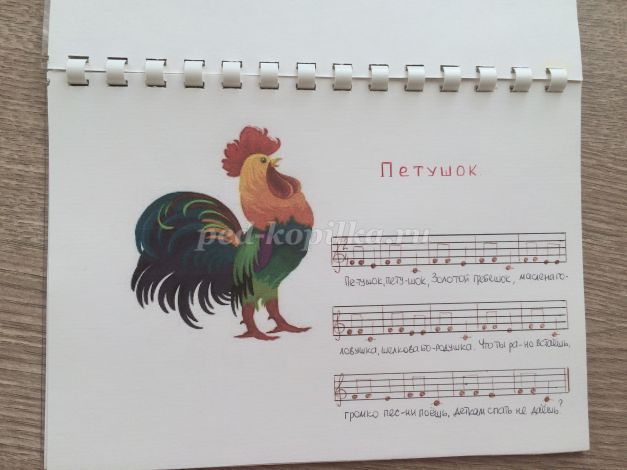
(Mishka) came to visit us, (Mishka) brought us a book.
Not a simple, unique, music book. The songs live in the book, Waiting for them to be sung. We open the book, the song comes to life... or
we, friends, open the book and we find the page. What the page will show us - We’ll sing about that now!
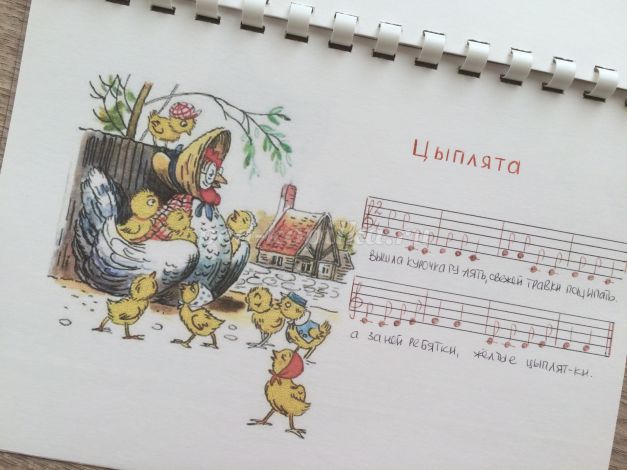
Next, the children are shown a page with a specific song, and they listen to the song performed by the music director. The song “comes to life” - you can play out the song or bring in a toy. At the discretion of the music director. At the end of the year, as a result, you can conduct a lesson in which children, if they wish, will choose songs they know from the book and perform them. As my own experience shows, children are very interested in this manual.
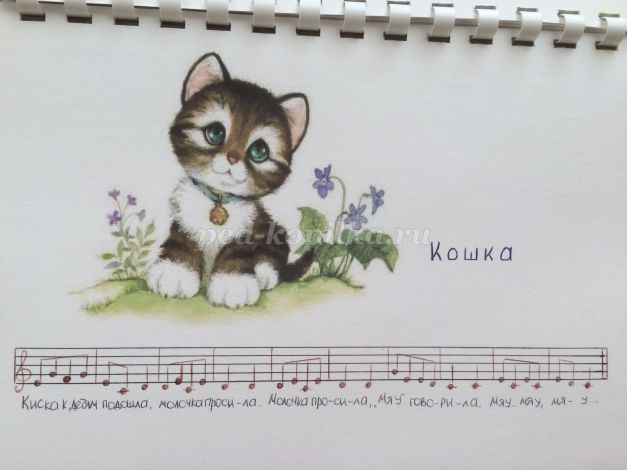
Thank you for your attention!
We recommend watching:
Joint activities in an early age group. Synopsis of a lesson with children in the first year of life Synopsis of a joint educational activity for children of the 1st junior group “Winter-Winter” Complex thematic lesson in an early age group together with mothers
Similar articles:
Lesson summary for an early age group. Cockerel
Lesson summary for an early age group. Dandelion
Summary of a game developmental lesson in an early age group on the topic: Rays of the sun
Game development activity in kindergarten for children of the third year of life
Lesson summary for the first early age group on the topic: Toys
Studying music is fun! The best books and manuals for children
Children are very sensitive. They always understand when parents themselves are interested in music and when they are not. Mom often says: “Quickly do the solfeggio assignments.” Do you think a child who also hates this solfeggio will want to study? And if mom says: “What are you studying now? Seventh chords? Did you know that Beethoven uses them so beautifully in the Moonlight Sonata? Don't know "Moonlight Sonata"? So let's listen!"
Of course, you will say that not every parent is a musician and has the time and knowledge. If you studied at a music school (and remember something else), then good. But even if you don’t have the knowledge, it doesn’t matter! We have prepared for you the most interesting books about music, with the help of which it is very easy to interest even the most stubborn!
You might find something from this list useful (almost all books can be downloaded completely free in pdf format):
- “Music Theory for Little Musicians and Their Parents”, author - T.E. Pervozvanskaya
This is both a fairy tale and a textbook that explains musical concepts in a very simple and interesting way.
- “Queen Gamma”, author - E. Poplyanova.
In principle, this author has a lot of good books for beginners that will help a child fall in love with solfeggio.
- “Note ABC”, author N.P. Konchalovskaya
This is a very good book-guide for small and large aspiring musicians
- “The alphabet of music for both preschoolers and primary schoolchildren”, author I.S. Korolkova.
- “Incorrect solfeggio, in which instead of rules there are songs, pictures and different stories!”, author O. Kamozina
A child can read this book on his own, but knowledge of the basics of musical literacy will be required.
- “The ABC of Music in Fairy Tales, Poems and Pictures”, author E. A. Koroleva
This manual is intended for classes with preschoolers (5 and 6 years old), but younger students will also definitely like it. There are a lot of games, poems and stories.
- “Musical education of a child”, authors Lev Madorsky and Anatoly Zak
And this book is needed if you want to understand whether your child should take up music and what needs to be done so that children love and are interested in it.
- “Music from A to Z”, author E. Finkelstein
This is a fairly “old” and well-known book that can still be found in bookstores. Very often, teachers of children's music schools recommend it.
- Manuals by V. Zhilin “How to conduct lessons on playing musical instruments”
His work is based on the K. Orff system, which promotes the formation of creative imagination in a child, instills a love of vocals, music and develops a sense of rhythm. There are very few books by Zhilin on sale.
- “Elementary Theory of Music”, author I. V. Sposobin
And this book is necessary for those who study or want to remember musical literacy.
If you can’t get into the musical theme, but really want to help your child, then give your young musician some time, maybe 2 times a week:
- find out what he is studying
- is he interested
- try playing a music quiz (the questions can be found in the textbooks given above).
To keep interest in music lessons alive, play cartoons with good melodies for your child, for example:
- "Cinderella"
- "Pencil and Eraser"
- "Nutcracker"
- "Ballerina on a Ship"

